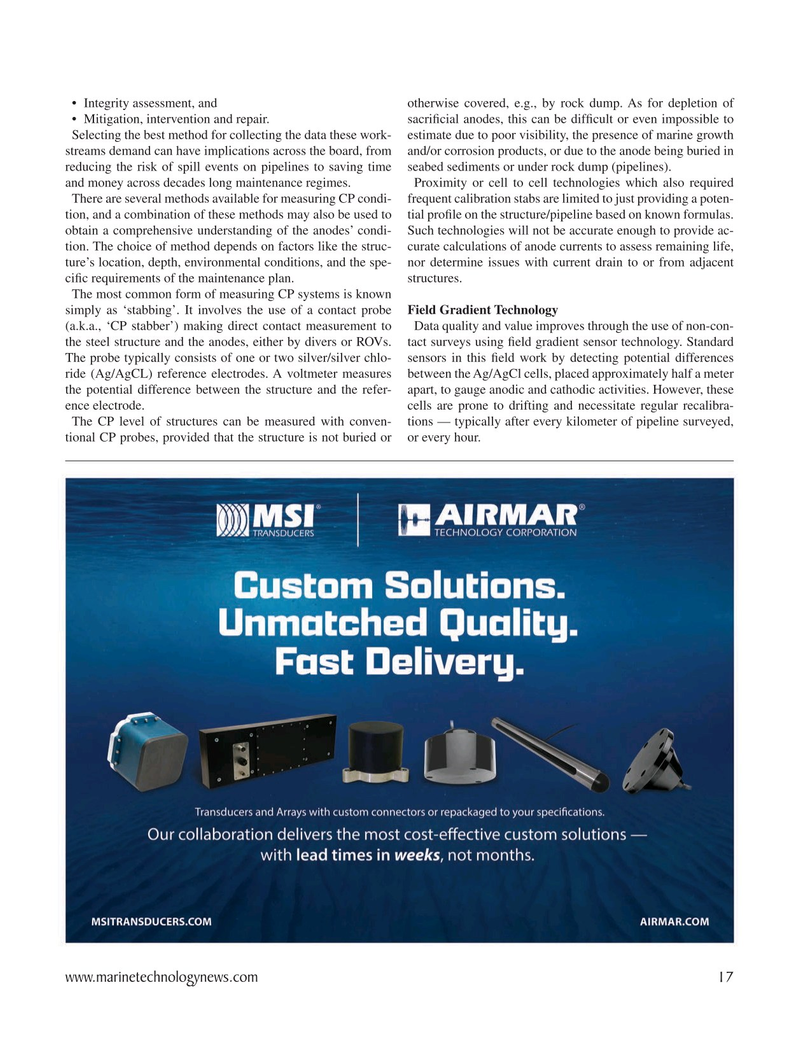
Page 17: of Marine Technology Magazine (March 2024)
Read this page in Pdf, Flash or Html5 edition of March 2024 Marine Technology Magazine
• Integrity assessment, and otherwise covered, e.g., by rock dump. As for depletion of • Mitigation, intervention and repair. sacri? cial anodes, this can be dif? cult or even impossible to
Selecting the best method for collecting the data these work- estimate due to poor visibility, the presence of marine growth streams demand can have implications across the board, from and/or corrosion products, or due to the anode being buried in reducing the risk of spill events on pipelines to saving time seabed sediments or under rock dump (pipelines). and money across decades long maintenance regimes. Proximity or cell to cell technologies which also required
There are several methods available for measuring CP condi- frequent calibration stabs are limited to just providing a poten- tion, and a combination of these methods may also be used to tial pro? le on the structure/pipeline based on known formulas. obtain a comprehensive understanding of the anodes’ condi- Such technologies will not be accurate enough to provide ac- tion. The choice of method depends on factors like the struc- curate calculations of anode currents to assess remaining life, ture’s location, depth, environmental conditions, and the spe- nor determine issues with current drain to or from adjacent ci? c requirements of the maintenance plan. structures.
The most common form of measuring CP systems is known simply as ‘stabbing’. It involves the use of a contact probe Field Gradient Technology (a.k.a., ‘CP stabber’) making direct contact measurement to Data quality and value improves through the use of non-con- the steel structure and the anodes, either by divers or ROVs. tact surveys using ? eld gradient sensor technology. Standard
The probe typically consists of one or two silver/silver chlo- sensors in this ? eld work by detecting potential differences ride (Ag/AgCL) reference electrodes. A voltmeter measures between the Ag/AgCl cells, placed approximately half a meter the potential difference between the structure and the refer- apart, to gauge anodic and cathodic activities. However, these ence electrode. cells are prone to drifting and necessitate regular recalibra-
The CP level of structures can be measured with conven- tions — typically after every kilometer of pipeline surveyed, tional CP probes, provided that the structure is not buried or or every hour.
www.marinetechnologynews.com 17
MTR #3 (1-17).indd 17 4/4/2024 8:57:23 AM

 16
16

 18
18
